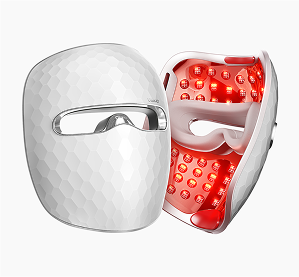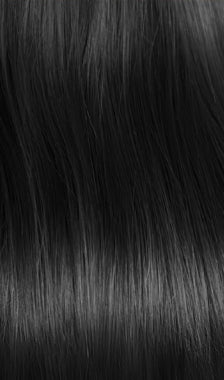
30 Best Easter Egg Ideas for Babies/Teens/Adults (2025)

Without the eggs, Easter isn’t the same, right? Eggs with plain colors are classic, but finding intricate patterns is much more exciting. Stylish Easter egg designs will make you rethink hiding them this year, so it’s time to step it up a notch.
There’s bound to be an ingenious pattern that calls to you, from the galaxy and marbled eggs to ones fashioned up like cacti and animals. So please put on your nail polish, and get some food coloring, paintbrushes, and markers, because it’s time to make stylish Easter eggs.
These do-it-yourself projects are so simple that everyone can take part – babies, teens, and adults. Try new egg-dyeing techniques with family and friends at an Easter arts and crafts session. These DIY projects are so impressive that you may be tempted to keep them on display all year.
When celebrating Easter, why do we traditionally give gifts of Easter eggs?
What’s the deal with Easter eggs? That’s a question you’ve probably asked yourself before. The biblical account of Easter, after all, has nothing to do with eggs. So, what does it all signify when it comes to Easter eggs?
Understanding the origins of Easter egg traditions can enhance your appreciation of the holiday's deeper meanings and cultural significance.
The Last Supper marks the beginning of the Easter story. Jesus ate this last meal with his disciples before he was arrested, tried, and crucified. Passover is the Jewish celebration that commemorates the Last Supper. Throughout Passover, white eggs were a common addition to meals.
It is believed that the Christian tradition of decorating Easter eggs with a golden cross depicting the crucifix on which Jesus died originated with this Passover egg. This was traditionally painted crimson to represent the blood of Christ that was spilled that Passover.
Around 1725, at the Court of King Louis XIV (14), in Versailles, decorating Easter eggs with chocolate began, marking a watershed moment in the holiday’s evolution. To celebrate Easter, widow Giambone poured melted chocolate into hollowed-out chicken eggs.
This innovation reflects how culinary creativity can transform holiday customs, making Easter celebrations even more enjoyable and memorable.
People used to fast from dairy products during Lent in ancient times. This resulted in a surplus of eggs at the end of Lent, leading to the tradition of eating many eggs over the Easter holiday. They were eventually manufactured out of chocolate and given as presents. Many people began giving up sugar for Lent instead of dairy, so the tradition of distributing sweets spread. Yet, the egg remained a mainstay of Easter celebrations.
Many modern-day Easter celebrations include exchanging chocolate Easter eggs as gifts among loved ones.
Exchanging chocolate eggs has become a cherished tradition, symbolizing love and joy during this festive season.
Decorating the house with dyed chicken eggs for Easter is still practiced in European nations such as Germany, Sweden, and Poland. Here is a selection of creative Easter egg decorating ideas that may be done with real eggs at home.
Easter Egg Ideas for Baby
Kids worldwide are excited about Easter because they can’t wait to go egg hunting and play with all the colorful plastic eggs they find. However, filling eggs for children can be difficult because of the restrictions on hard candies and jelly beans. Still, there’s no need for alarm, at least not immediately. But Easter eggs can be filled with more than candy bars and jellybeans. These imaginative alternatives to candy for stuffing Easter eggs will help you save money without sacrificing the holiday spirit.
1. Bath Time Eggs
Use waterproof plastic eggs to make bath time fun for your baby. Fill the eggs with bath toys or squirters for a fun and interactive bath time experience.
Incorporating these eggs into bath time can encourage sensory exploration for your baby, making it an engaging activity.
2. Sensory Eggs
Babies love to explore different textures and materials, so why not fill plastic eggs with items such as rice or beads to create a sensory experience for your baby? This can help their cognitive and physical development as they explore the world around them.
3. Easter Eggs Wrapped with Washi Tape

Washi tape is a fun and simple way to decorate dyed and uncolored eggs. As a bonus, a roll of washi tape can hold eggs.
4. Citrus Easter Eggs
These lemon-themed eggs are very lifelike. To make “lemons” out of white eggs, paint them yellow, cut out leaf shapes from green paper or card stock, and hot glue them on.
These creative eggs can also serve as a fun art project to involve children in the Easter festivities.
5. Hidden Messages from Cartoon Characters
Print out your kid’s favorite cartoon characters and glue them onto plain white eggs. Deborah, a blogger, utilized inkjet printer paper to make temporary tattoos.
This idea combines art and creativity, allowing your child to express their favorite characters while celebrating the holiday.
6. Knitted Eggs for Easter
These cross-stitch Easter eggs are too adorable and straightforward to pass up. Even better, they’re suitable for infants and young children. You’ll also need black and green Sharpies, white eggs, and a cross-stitch template.
The simplicity of this project makes it a great way to introduce children to crafting skills and the joy of handmade decorations.
7. Sticker-Resist and Sharpies for Decorating Easter Eggs

Use the stickers you already have around the house to make Easter egg decorations that resemble the famous tape-resist art trend.
Stickers can add personalization to your Easter eggs, allowing for a unique touch that reflects individual creativity.
8. Using Hole Reinforcement Stickers to Adorn Easter Eggs
Similarly to the preceding method, you can use hole reinforcement stickers to make an image that the dye will not affect when you decorate the egg.
Hole reinforcement stickers are versatile and can be found in various sizes, enabling you to create different designs on your eggs.
9. Decorating Easter Eggs with Image Transfers
Creating your picture transfers is easier than you think. The results are beautiful, and you may use this as a guide to making your own Easter eggs.
Image transfers allow for intricate designs that can elevate the appearance of your Easter eggs, making them truly stand out.
10. Easter Egg Collages
Use printed paper napkins to create lovely Easter egg collages. The end product of this craft is beautiful, and it’s simple enough for kids to accomplish.
Using paper napkins adds texture and color to your collages, making each egg a distinct work of art.
Easter Egg Ideas for Teens

Easter is a beautiful time for families to come together and enjoy the joyous festivities of this holiday. But, of course, one of the most anticipated activities is the Easter egg hunt, where teens search for colorful eggs filled with surprises. We have compiled a list of 10 of the best Easter egg ideas for teens to make it fun and memorable.
11. Paint Wooden Easter Eggs
Make beautiful designs using watercolors and Sharpie markers on wooden eggs that may be used year after year.
12. Easter Eggs Made with Melted Crayons
Making crayon-melted eggs is a fun and simple activity to do with kids. But, if you want your Easter eggs to have the best crayon-resist effect, draw on them while they’re hot with crayons.
Creating crayon-melted eggs not only sparks creativity but also engages kids in a hands-on activity that enhances fine motor skills.
13. Easter Egg Tree

Make an Easter egg tree with all those pretty eggs. It’s simple to put together and looks great as an Easter decoration.
Displaying an Easter egg tree can become a cherished family tradition, showcasing your artistic creations throughout the holiday season.
14. Drawings in Frames
First, sketching frames may make these lovely Easter eggs with Sharpies and then dying them with Kool-Aid.
Using Sharpies and Kool-Aid offers a unique twist on traditional egg decorating, resulting in vibrant and personalized designs.
15. Taped-Up Yolks
An enjoyable and mess-free approach to decorating Easter eggs with a wide range of colors and textures.
Taped-up yolks allow for a creative and organized way to experiment with various colors, making the process enjoyable for all ages.
16. Dirty Eggs
A striking pattern for your Easter eggs that’s simple to draw with practice. These eggs are so beautiful they should be on display year-round.
Dirty eggs bring an artistic flair to your Easter celebrations, combining simplicity with stunning results that can be enjoyed long after the holiday.
17. Spinach Eggs
Brightly colored twine wraps around the entire egg carton, making it reusable year after year.
18. Hidden Mood Triggers

These “moody” eggs are fantastic. These eggs’ hues shift in response to your emotions, much like a mood ring. You can achieve the same effect with some mood paint and blackboard eggs.
These unique eggs can add an exciting twist to your Easter celebrations, allowing for a fun exploration of colors and emotions.
19. Nail Polish Eggs
Fill plastic eggs with different nail polish colors for your teen to try. This is a fun and creative way to encourage your teen’s love of beauty and fashion.
This activity not only promotes creativity but also fosters self-expression as your teen experiments with different nail polish designs.
20. Easter Eggs Decorated With Dried Flowers
Make your own one-of-a-kind Easter egg decorations with these dried flower eggs. You’ll need dried flower petals, a craft brush, white glue, and dyed eggs to make your own.
These decorations offer a beautiful and personal touch to your Easter festivities, making them a cherished keepsake.
Easter Egg Ideas for Adults
21. Constellation Eggs That Are Resistant To Wax
As the clear wax crayon prevents the egg dye from penetrating the areas you’ve drawn on, this easy procedure may be entertaining and even magical. The cosmic splendor of constellations can be easily shown by drawing them and then dipping them in a gorgeous blue.
22. Planet Eggs

These planetary eggs are perfect for teaching kids about the solar system on Easter, Earth Day, or any other day. Create your solar system after getting ideas from a picture or planet book. First, you’ll need to dye eggs to represent the many planets in the solar system. To achieve a blotchy effect (a la the moon), dab wet paint with a paper towel, and to achieve a striped effect, wipe paint around the egg with a paper towel (like Venus).
23. Bug Eggs in Silhouette
Draw or trace a bug image onto a piece of parchment paper, then adhere to a broad selection of clear packing tape on top to create homemade stickers for your eggs. Then, using scissors or an X-acto knife (parents only), cut out the shapes. Your stickers are unique to you. Eggs shaped like silhouettes can be made with these.
Stick the created sticker on an egg and ensure it sticks well, especially at the edges. Immerse it in your chosen dye until it gets the desired shade. Take off the sticker and admire the silhouette once it dries.
For a striking visual effect, consider using contrasting colors for the dye and the sticker, which will enhance the silhouette's visibility.
24. Life Drawing Bug Eggs

The more experienced craftsmen can construct lovely eggs by pulling inspiration from real life or their favorite guidebooks. Find an actual specimen or pick up your trusted reference book on insects, birds, plants, or the solar system, and try your best to capture its likeness on paper or canvas. But, of course, it can be imperfect and still work. All the most lovely things in the world have flaws.
25. Patterned Cameo Eggs
Put an egg in a dye container, but only up to its top. Keep pressing until it reaches the desired shade, then let it air dry.
Experiment with different dye colors to achieve a variety of shades and effects on your eggs, making each one unique.
Afterward, you can utilize a bird identification book to replicate the exact feather tones of your preferred species. You could also trace a silhouette and fill it with a single color for a traditional cameo effect.
This technique not only allows for creativity but also teaches about nature as you explore different bird species and their feather patterns.
26. Botanical Silhouettes
Go out into the wild and start collecting plant life. Once you have your samples, cut a pantyhose leg into pieces about 5′′-6′′ long and knot one end. Set the desired position of the leaves or petals and the egg inside the tube. Tighten the nylon cord with a knot (as tight as possible). Let the eggs dry after being dyed. After drying the egg, please remove it from the pantyhose to see its natural outline.
27. Puzzle Pieces
You may try putting a few bits in each egg. Ultimately, they get to experience the thrill of constructing a mystery!
Including a mix of puzzle pieces can create a fun interactive experience for kids, encouraging teamwork and excitement during the egg hunt.
28. Fruit Snacks

Fruit snacks are a healthy option for filling Easter eggs. You can get into the spirit of the season by picking out some bunny-shaped Annie’s or some Welch’s Easter-themed fruit snacks.
These snacks provide a fun and wholesome treat for children while keeping the festive spirit alive during the Easter celebration.
29. Baking Ingredients
Make Easter dessert a search to get the youngsters involved: To an egg, add the necessary ingredients and the instructions for cooking.
This activity not only makes for a delicious end product but also encourages hands-on learning about baking and cooking for kids.
30. Easter Eggs in a Money Bag
These paper mache pink money purses are as trendy as those with real golden eggs. Kelly, a blogger, painted them pink, stuck them on dollar sign stickers, and tied them together.
These creative money bags can also serve as festive decorations, adding a playful touch to your Easter celebrations.
Conclusion
Which of these Easter egg ideas is your favorite and why? Of course, it’s all fun, but the energy given to creating them and the great event they commemorate make them a worthwhile adventure. So now let the celebrations resume!

Prada vs. Louis Vuitton: Which One Should You Choose?

18 Special Memorial Day Weekend Activities for Family in 2025

What is Aftershave: Everything Explained
Need guidance?
















































